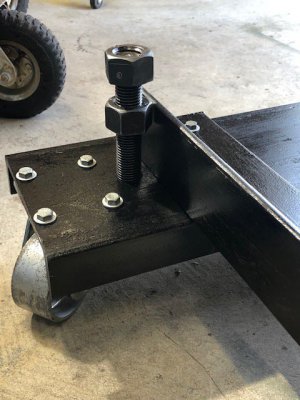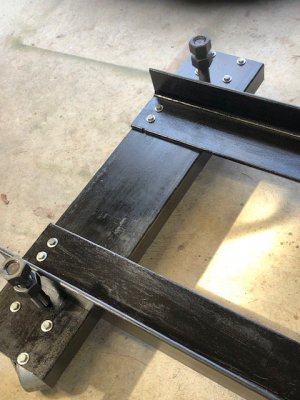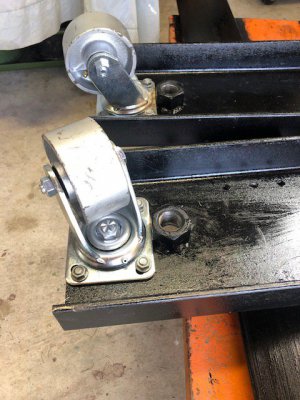- Joined
- Nov 28, 2016
- Messages
- 2,409
The manual for my lathe doesn't specify the size of the bolts to mount the lathe on the bed. Just says use supplied screws. My lathe weighs around 350 pounds. The motor and its mounting bracket is separate from the lathe. The lathe by itself probably weighs around 275 pounds. I can pick up either end of the lathe. My current mounting bolts are 7/16. All the bolts do is hold the lathe to the bench. Don't support the weight of the lathe. I think that 1/2 is the largest bolt that will fit through the mounting holes. I plan to make threaded washers (wrong term??) as thick as a standard size nut. Flange nuts would also work. The bolt will come up through the bench top. A threaded washer will be screwed down to hold the bolt in place. Another threaded washer will be screwed onto the bolt. The lathe will sit on this washer. Then there will be a nut that holds the lathe against the threaded washer. Move the threaded washer that the lathe sits on to remove any twist in the bed. Then tighten the nut to hold everything in place. That's the plan so far.
I would consider that to be a good plan...
-Bear





